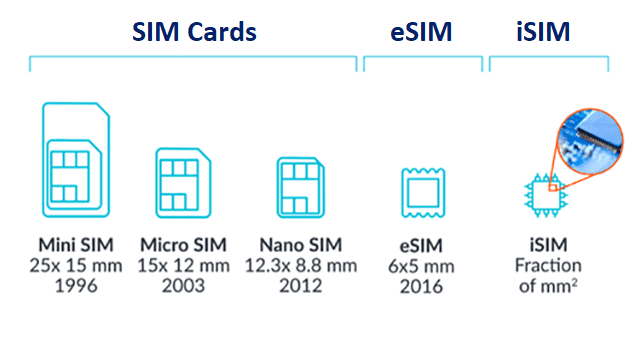Econet Nicodemously introduced eSims late last year. You may have missed it because it’s not that big of a deal if we’re being honest. If you’re unfamiliar with eSims click here to learn more about them.
This explains why Econet did not even make a splash about eSims hitting stores although they had made some noise in 2019 when they promised to bring the eSims to market. Perhaps they were ashamed of how long it had taken to get it done.
I have been using an eSim on my phone and in daily use, you get the same experience as using a Mini-SIM. There are benefits though.
We Zimbabweans are used to switching SIM cards to take advantage of different promotions. Or lately, with all mobile network operators delivering shoddy service, you may want to choose which SIM to use on the fly.
eSims make it easy to do this. No popping SIMs in and out, you know how annoying that is on single SIM phones, especially considering how these new devices require a SIM ejection tool which people like me can never locate in times of need.
You know when you used to look at triple SIM phones and wish you could have that? With eSIMs, if your device manufacturer decides, you can have way more than three SIMs on your phone.
You know, this multi-SIM business which is popular in budget Android phones is targeted at third-world countries where users chase promotions from MNO to MNO.
iPhone as king of multi-SIM devices?
Yet now with eSims, the iPhone is besting them all, giving users the chance to store up to 8 SIMs on an iPhone 14. Only 2 can be active at the same time but you can have the rest on the phone, just waiting for their time in the sun. If NetOne and Telecel had eSims, I would be a happy camper.
eSims are still pretty new. In Zimbabwe, we only got them late last year and two of the three MNOs do not have them yet but the next evolution of SIM tech is already here – iSIM.
Space savings and power requirements
One of the reasons device manufacturers love eSims is that they require less space in the device. You may look at a nano-SIM and think it is small enough but manufacturers need every square millimetre in the phone chassis.
The space saved by using eSims can be used to include larger batteries or better cooling or something else.
These space savings are even more significant when we talk about smartwatches and IoT devices.
The eSim (embedded SIM) is embedded in your phone’s motherboard and so uses much less space than even a nano-SIM. It’s still too much space though and the iSIM takes it to the next level.
iSIM – directly on the device’s processor
The integrated SIM (iSIM) is integrated into the processor. Device manufacturers do not need to leave space for a removable SIM or fiddle with soldering an eSim onto the motherboard. Yet, the iSIM will allow those devices to connect to a cellular network just as one using a Micro-SIM would.
You will see in the image below just how much space iSIMs save.
Besides the space savings and what they could mean, the other major benefit of iSIMs is that they use significantly less power than eSims.
We talked about the space savings iSIMs provide, See for yourself what we are talking about on this Thales illustration.
Mini SIM – 1996 – 25mm by 15mm [Removable SIM]
Micro SIM – 2003 – 15mm by 12mm [Removable SIM]
Nano SIM – 2012 – 12.3mm by 8.8mm [Removable SIM]
MFF2 – 2013 – 6mm by 5mm [Soldered eSIM]
WLCSP – 2018 – 2.7mm by 2.5mm [Soldered eSIM]
MFF-XS – 2020 – 2.6mm by 2.4mm [Soldered eSIM]
iSIM – 2021 – less than 1 square millimetre
Other benefits of iSIMs
Thales says “by eliminating the need for a physical SIM card or an additional soldered eSIM component, iSIM technology reduces hardware costs, enhances security, enables over-the-air provisioning, increases flexibility, and opens up opportunities for smaller device designs.”
Reduces hardware costs by enabling manufacturers to create smaller and more compact devices
Physical SIM cards can be removed, lost, or stolen. eSims and iSIMs cannot, reducing potential data breaches or unauthorized access to sensitive information
Over-the-air provisioning is a fancy way to say iSIMs make it easier for MNOs to manage their customers’ devices. Customers can change or activate eSIMs and iSIMs from the comfort of their homes unlike with physical SIMs
Flexibility refers to the benefit of being able to store multiple SIMs on one device
Widespread deployment of iSIMs is expected by 2024. While we wait for NetOne and Telecel to adopt eSIM, the world is moving on to the next thing.-techzim

